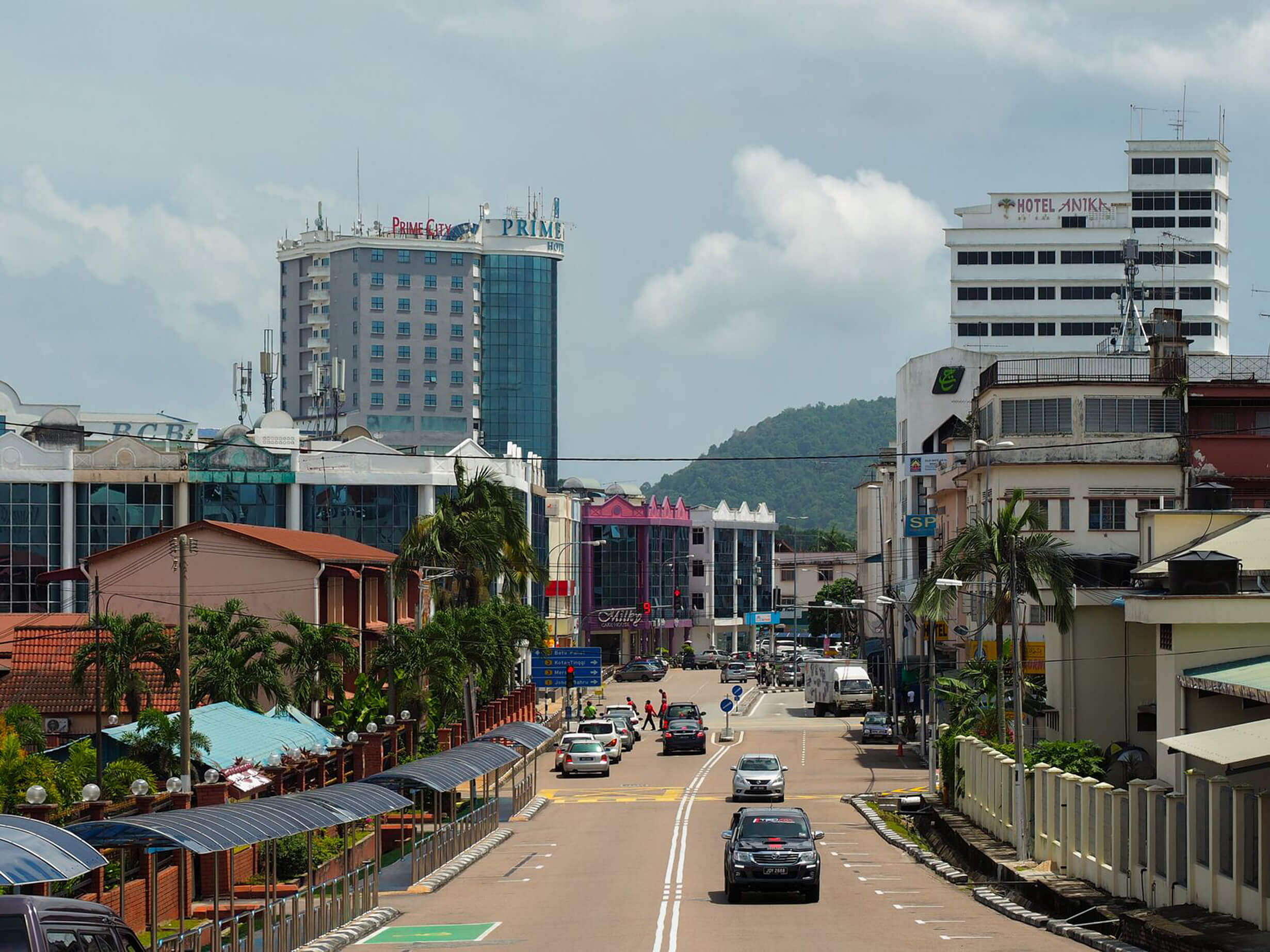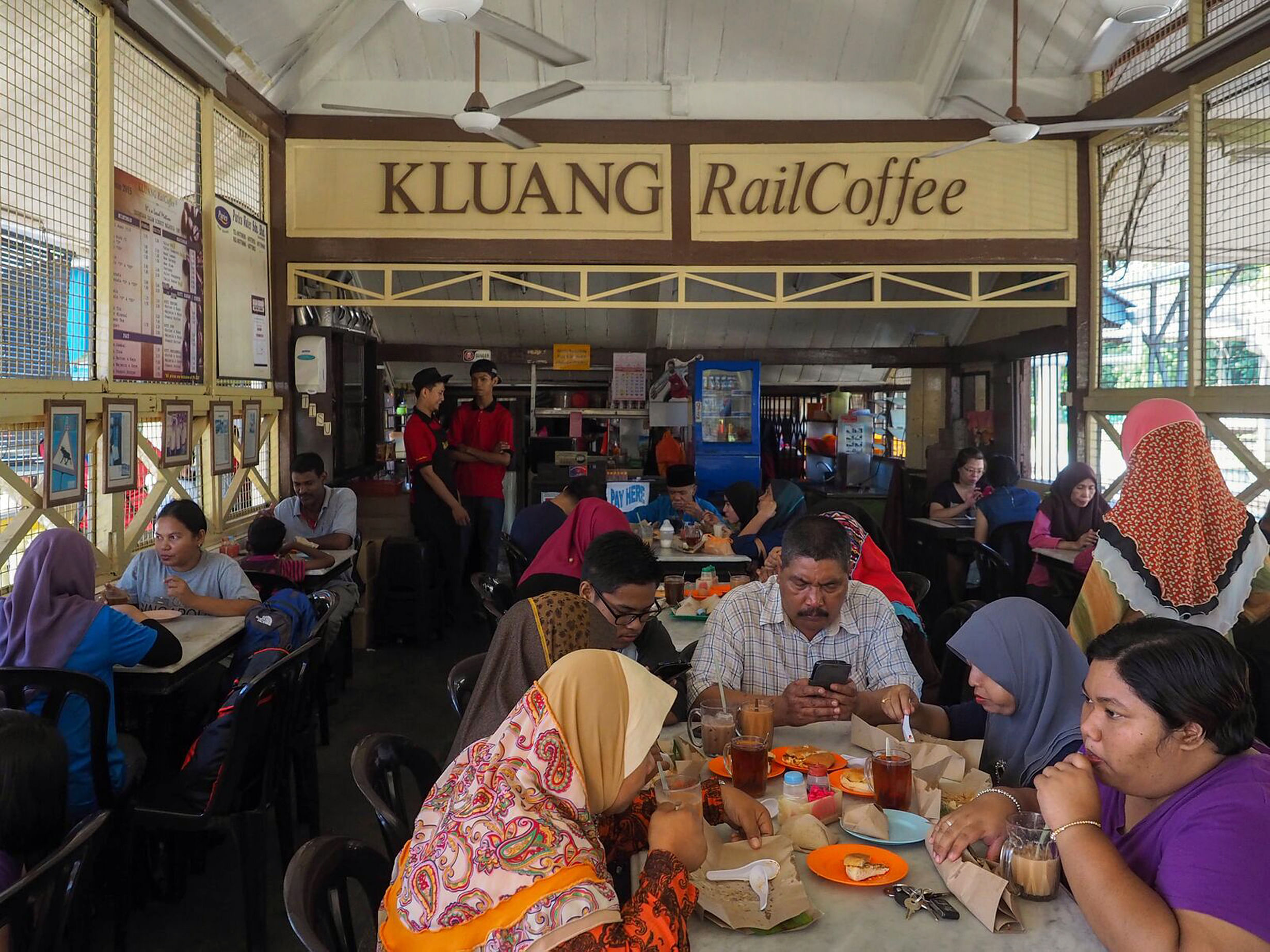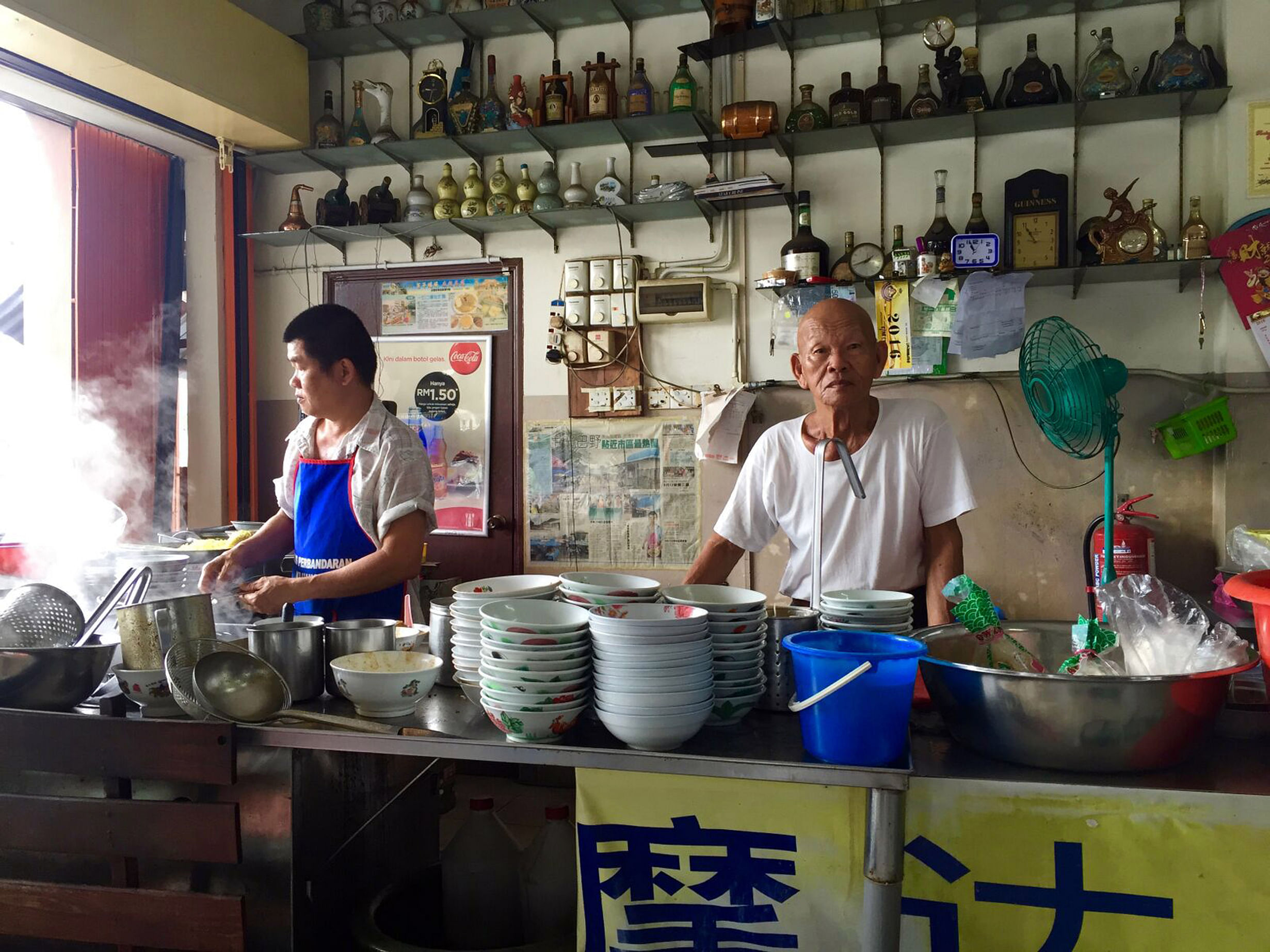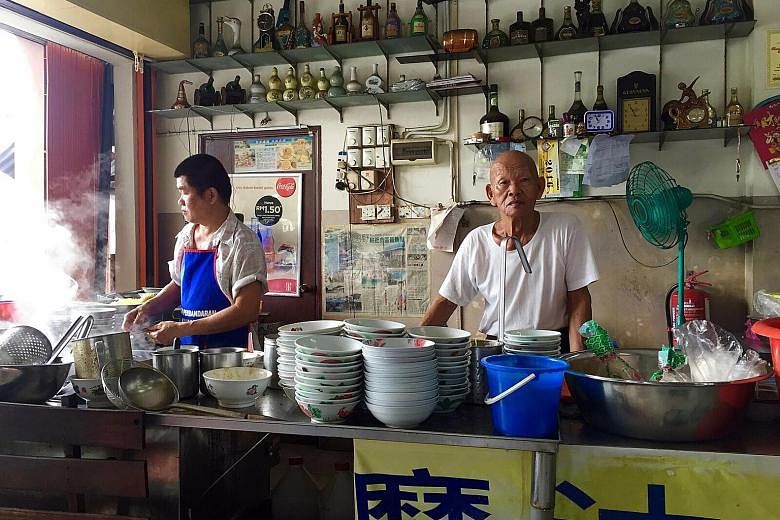For most of the last century, nothing much changed in sleepy and laid-back Kluang, which was once Johor's second most prosperous town after the capital Johor Baru.
In the 1970s and 80s, Kluang seemed to have gone from being a key inland port to a forgotten relic. The importance of its iconic railway station, which served vast tracts of agricultural areas and several manufacturing hubs, diminished in importance after Malaysia beefed up its road and air transport system.
Even today, Singaporeans often give the place a miss as they drive up on the North-South Expressway from JB to Malacca and other places further north - despite Kluang being just an hour away from JB.
This could all change by the time the Batu Pahat High-Speed Rail (HSR) station is up and running in about 10 years. The HSR station will be about half an hour away from both Batu Pahat and Kluang.
Even now, cash-rich residents of Kluang - which means "bat" in Malay - are buzzing over a steady transformation that has been taking root over the past two decades, and reversing an outflow that previously kept the town in the doldrums.

It seems crazy that up to the mid-1990s, 500 squatter homes sat right in front of the main transport hub, which included the town bus stand, instead of a lively business district.
In 1990, Datuk Tan Seng Leong - now known as the "Father of Kluang" - proposed that the third-generation occupants be relocated to what was then Johor's first private development project.
Step outside the railway station today and a commercial hub with modern shops spills out down Jalan Sultanah. It is the only town outside the state capitals and Klang Valley to boast global fashion brands like Uniqlo, H&M and Cotton On.
Only the smell of freshly brewed coffee wafting out of the now famous Kluang Rail Coffee franchise reminds people of the past, when derelict colonial buildings and squatters would greet recent arrivals.
"When I started my law firm in 1993, there was only one pub, and I was the only young professional there. But in the last 20 years, the landscape has changed completely," said the local Malaysian Chinese Association chief Gan Ping Sieu, born and bred in Kluang.
It was a costly process for Mr Tan, who is the managing director and founder of public-listed property developer BCB Berhad.
He spent years in court as politicians protested against the controversial plan.
In the end, he paid RM30,000 on behalf of the state government to each squatter, three years before the first shoplots were ready, and right smack in the middle of the 1997 Asian financial crisis.
 Kluang railway station was once an inland port transporting agricultural goods and military assets during British rule. PHOTO: COURTESY OF WOON KING CHAI
Kluang railway station was once an inland port transporting agricultural goods and military assets during British rule. PHOTO: COURTESY OF WOON KING CHAI
"I sold it all only in 2002 and had to service hundreds of millions in loans for the project. But I couldn't abandon it because I had already paid the squatters in cash," he said.
OPENING THE FLOODGATES
Since then, others have taken Mr Tan's lead in reshaping the face of Kluang, and unleashing the pent-up purchasing power of the cash-rich residents in the town, which has a population of 300,000.
Many are businessmen and, according to third-generation Kluang Rail Coffee operator Barney Lim, their self-employed status allows them the flexibility of having "tea-time" breaks, which is now something that is practised in an astonishing 500 kopitiams or coffee shops across town.
Kluang is Johor state's richest district - in terms of per capita gross domestic product - racing ahead of state capital Johor Baru with an average of RM22,294 (S$7,475) a person as of 2010 - a 21 per cent growth since 2000.
Johor Baru, sitting in the heart of the federal government-driven Iskandar development corridor, has grown a relatively modest 14 per cent in the same decade.
Kluang produces over a quarter of Johor's palm oil output, is a ceramics hub featuring two of Malaysia's top tiling companies, Guocera and MML, and is also home to a number of multinational firms, such as personal care giant Kimberly-Clark, German refrigerator maker Liebherr and French building materials firm Terreal.

Over the last decade, the town's old money has begun to create new money. In the mid-2000s, local developer Majupadu built the Kluang Mall using a capital-intensive and higher-risk model of full ownership of the shopping centre and leasing space to tenants, instead of selling lots off. This allowed Majupadu to control the tenant mix.
But the project struggled in the beginning, incurring losses with only 50 per cent occupancy.
"When we called potential tenants, they didn't even know where Kluang was. They asked if we meant Klang," said Majupadu corporate communications head Vino Wong, referring to the town near Port Klang.
But Majupadu executive director Tey Fui Kien was determined to succeed - having ditched the bright lights of Kuala Lumpur and a career in law to return home to Kluang.
The turning point came more than two years after the mall opened its doors.
Padini, one of Malaysia's biggest apparel brands, decided to open its first store outside of the capital cities and the Klang Valley in Kluang Mall.
This set the precedent for international brands like Cotton On, Uniqlo and even H&M, which had entered Malaysia only in 2012, to do the same last year.
"We see potential in Kluang in terms of customer base as well as good business conditions and store location, among other factors, and we are extremely encouraged by how well received the brand is in Kluang," said H&M spokesman Abby Wee, in an e-mail from the retailer's Singapore office.

More than 500 people queued up for the store's opening in Kluang. The mall now boasts 95 per cent occupancy, with a cineplex, bowling alley and what was the only Starbucks in the area.
"Before this, I would go to Johor Baru. When I saw that there was a Uniqlo here, I was shocked!" said factory worker Faiq Fakhri, 26.
According to Kluang Mall's 2013 customer survey, nearly a third of weekend footfalls were those of visitors from outside the district.
So many tourists from near and far have been flocking to Kluang that Mr Tan has had to divert demand from Singaporean tour groups for his Prime City Hotel - the district's largest inn - to other hotels that have come up in town.
KLUANG 2.0
Another key attraction is the 40ha Zenxin Organic Farm - Malaysia's largest - which features an organic restaurant and grocer, walking and bicycle tours, and a petting zoo.
Executive director Tai Seng Yee said there have been 500,000 visitors from Singapore since the farm opened its doors a decade ago.
"Fourteen years ago, we were making organic fertiliser but couldn't sell it. So, we started our own farm in Kelantan and found that organic vegetables taste better. But then, we couldn't sell the vegetables there because people didn't trust this new product," he said.
-
Where to go, what to do
-

KLUANG RAIL COFFEEThe original kopitiam or coffee shop at the railway station still serves the classic wrapped nasi lemak and mee siam, and the bread is still toasted over charcoal.
ZENXIN ORGANIC FARM
Stop by Malaysia's largest organic farm, and learn how fresh vegetables and fruits are grown without the use of pesticides.
GUNUNG LAMBAK (MOUNT LAMBAK)
The twin peaks of the hill, which is about 500m high, are a popular spot for a quick hike, with a 1.5km trek to the summit.
GERAI MAKAN BOTAK (BALDY'S FOOD STALL)
Another local institution, so named after its bald proprietor. The curry mee has been consistently delicious for decades, locals say. The stall has an antique collection of teapots and liquor bottles.
BARNEY'S
Barney's serves up salt-baked fish, sous vide recipes and a special hot chocolate.
The company returned to Kluang, where it had other food businesses. It opened up the farm to the public, believing that if people understood the process, they would believe in the product.
"It cost us RM30 million to get to where we are now, with about 10 tonnes of produce daily," Mr Tai said.
But for the 101-year-old town, these are just baby steps.
Both the Kluang Malaysian Chinese Association and Democratic Action Party have been pressing for recognition of the town's heritage.
In January, their efforts finally paid off, when an 8ha piece of land near the railway station was gazetted by the federal government. The move paves the way for the revitalisation of forgotten back lanes and historical sites.
With the railway line set for an upgrade to one that is electric and dual-track, and the much-vaunted HSR link from Singapore likely to include a station just 30km away, these separate developments could come together to make Kluang a new tourist hot spot.
For Mr Lim, it will mean serving a whole lot more coffee. In 2003, he also opened Barney's - a fancy upmarket restaurant that is now the place to be seen in town.
He said: "People used to say Kluang is in the middle of nowhere. But now, it is actually in the middle of everywhere."
WATCH THE VIDEO
Hear what locals say about Kluang. http://str.sg/4cYj.

